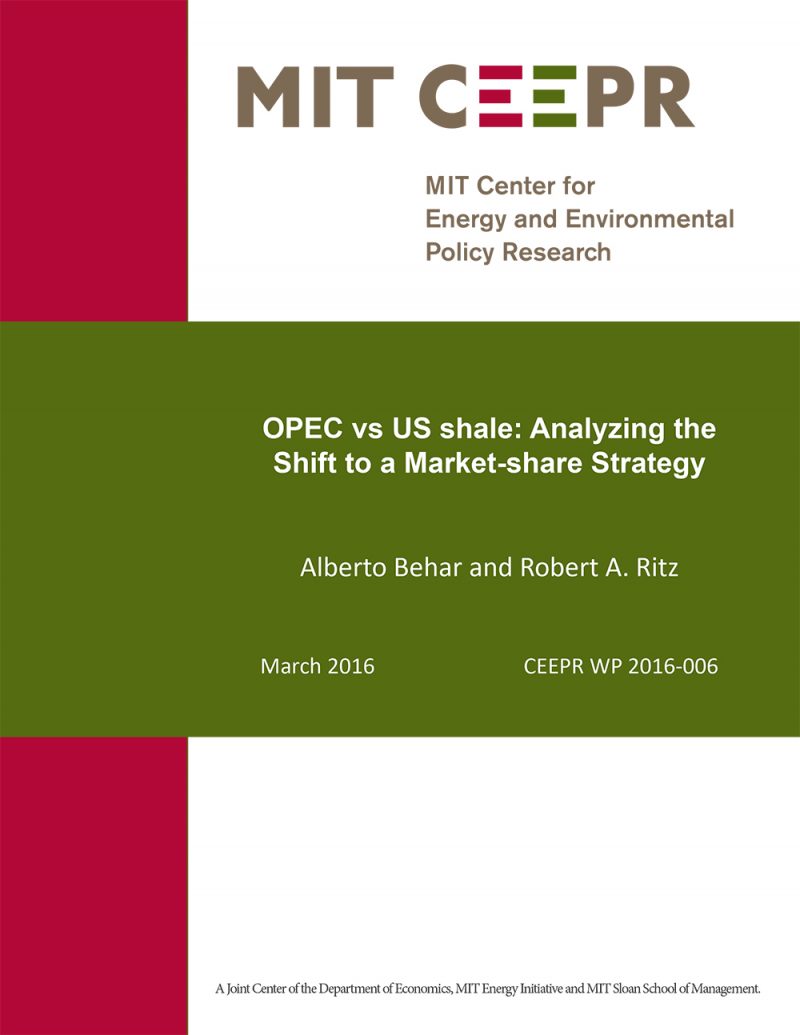OPEC vs US shale: Analyzing the Shift to a Market-share Strategy
Alberto Behar and Robert A. Ritz
March 2016
In November 2014, OPEC announced a new strategy geared towards improving its market share. Oil-market analysts interpreted this as an attempt to squeeze higher-cost producers, notably US shale oil, out of the market. Over the next year, crude oil prices crashed, with large repercussions for the global economy. We present a simple equilibrium model that explains the fundamental market factors that can rationalize such a regime switch by OPEC. These include: (i) the growth of US shale oil production; (ii) the slowdown of global oil demand; (iii) reduced cohesiveness of the OPEC cartel; (iv) production ramp-ups in other non-OPEC countries. We show that these qualitative predictions are broadly consistent with oil market developments during 2014-15. The model is calibrated to oil market data; it predicts accommodation up to 2014 and a market-share strategy thereafter, and explains large oil-price swings as well as realistically high levels of OPEC output.
Keywords: Crude oil, OPEC, price crash, shale oil, market share, limit pricing
JEL Classifications: L12, L71, Q41



